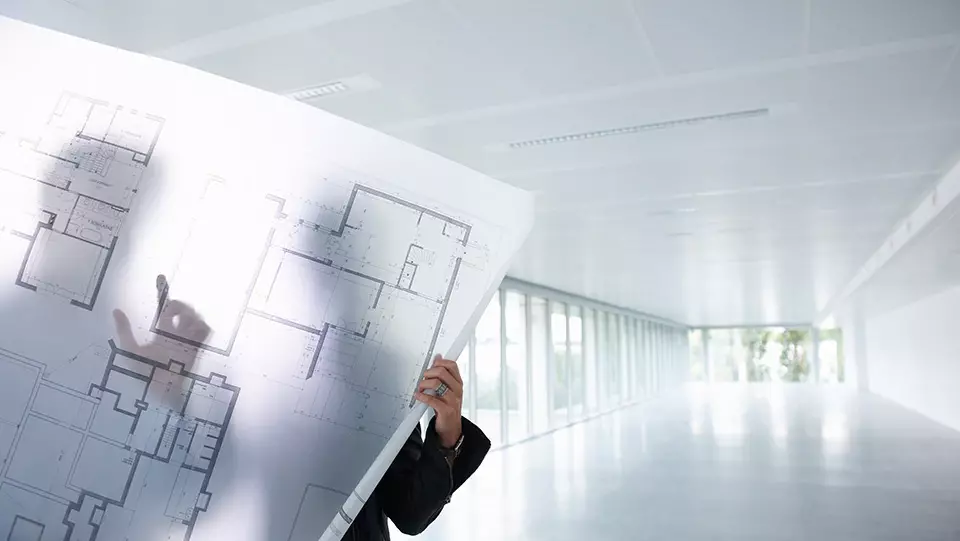6 Ways to Help Protect Your Design Firm from Professional Liability Claims


When a new project comes in the door, optimism is high, and design possibilities are buzzing around the office. The reality, though, is that every new project brings a new set of risks. For example, these risks can be associated with the size and complexity of the project, the method of delivery and the scope of your involvement. Professional liability claims pose a persistent risk to businesses that provide design services.
Even things like budget limitations, lean and green construction methods and the adoption of new technologies can be potential sources of liability. Claims are brought against firms of all sizes and reputations and can come from project owners, subsequent property owners, contractors, subcontractors, sureties and other project participants and stakeholders. The resolution of the dispute, defense costs and bad publicity can, at a minimum, disrupt a business’s operations. More severe claims may threaten a business’s very livelihood if the costs of claims and resolutions exceed what a firm can handle.
“The number of participants and interrelationships in a single project in the design and construction industry often muddies the understanding of responsibilities and standards,” said Joseph Jones, Director of Risk Management for Professional Liability at Travelers. “Taking time at the very beginning to spell out and document procedures, roles and expectations can save you time and frustration later on and helps protect everyone’s interests.”
Below are some suggestions for how to help protect your design firm from a lawsuit or professional liability claim.
1. Maintain a complete record of all communications
Over the course of a project, many types of documents are created. Verbal communications may dictate changes as the project progresses. To help protect against potential liability claims, create an organized record of all project communications as they happen.
- Establish standards for both formal and informal communications inside and outside your firm.
- Document all digital, physical and verbal communications, especially those about changes and decisions, with project owners and consultants.
- Arrange for regular, timely communication with the client and document client confirmation of changes so you and they are appropriately informed of crucial aspects of the project’s progress.
- Ensure that there is a process for disseminating information to all parties regarding changes and decisions throughout the project’s lifecycle.
- Acknowledge receipt, in writing, of information regarding critical issues.
2. Use contracts that adhere to industry standards
Clearly written agreements with subconsultants and other consultants providing services for a project can help clarify responsibilities in the event of a claim. Strong contracts with clients can also help protect your firm in the event of a claim.
- Never take on work without a contract signed by the client.
- Have every agreement, no matter its source, reviewed by a legal advisor with design and construction industry expertise. Specific language unique to the industry can help protect you from liability.
- Avoid contract language that implies guarantees, warranties or certifications, or other contractual provisions that go beyond standard professional obligations.
- Be wary of tacitly agreeing to responsibilities not specified in the contract, e.g., a spur-of-the-moment construction site visit with the owner to review progress. In this instance, the owner could accuse you of negligence if you fail to report work deficiencies.
- Stay up to date on the standards established by your industry peers to ensure that your services are consistent with the applicable standard of care.
3. Work within your expertise
It may be enticing to go after work that’s outside your realm of competency or to extend your capabilities by assigning a junior staffer to a senior role. Stretching in these ways can be a source of business growth. However, claiming expertise where experience is limited or unproven can open you up to increased risk if something goes wrong.
- Assign project responsibilities to staff that have the proper level of experience; make up for staffing issues with scheduling changes and teaming opportunities.
- Don’t “fake it ’til you make it.” For the right opportunity, where the business will benefit over the long term, protect yourself by investing in expertise.
- Thoroughly research subconsultant capability claims; ask for and follow up on referrals. A sub’s exaggerated mastery or lack of understanding around project expectations and standard of care can put you in a position of risk.
4. Choose your clients carefully
It’s exciting when a client chooses to work with you. However, you still need to decide if they are the right fit. Every client brings opportunities and risks based on their industry, corporate structure and financial standing. While your inclination may be to accept new business, do the research necessary to understand each client’s specific situation.
- Financial strain can increase the likelihood of delayed payments.
- Clients, whether they are public officials or private businesspeople, can change positions, opinions and priorities. The stability of the team with whom you will be working can be a determining factor in whether a clear vision is driving decision-making and if timelines will be met.
- Some clients have little to no experience with the design and construction process. This can necessitate extra time for education and may still result in changes that cost time and money.
- The corporate structure of a business in the private sector may indicate the client’s ability to respond to future issues.
- Public entities may have statutory limits or protections that could increase your risk.
- The contract your client asks you to sign, or their reaction to the one you offer, can also be an indicator of potential risk.
5. Protect your data from bad actors
Data breaches could expose Personally Identifiable Information (PII), including Social Security numbers and other sensitive information. There’s also the potential risk of loss of Intellectual Property (IP). If you and your employees have access to or store your client’s PII or IP, you are liable for its security. Loss of IP information, whether to competitors or criminals looking to do damage, can cause a business disruption with significant financial implications. A data breach involving PII could involve costly regulatory and notification requirements. Consider engaging a reputable IT firm for a cybersecurity audit and to help you gain a more comprehensive understanding of all that cybersecurity can entail. The following is a partial list of steps you can take to help strengthen your data security:
- Establish a password management protocol and complexity standard that all full-time employees and temporary workers are required to follow.
- Set clear email standards for message content, encryption and file retention.
- Require employees to take necessary precautions to protect company-owned devices from theft and to establish secure password protection.
- Require employees to accept limitations and controls for personal devices that have access to company information.
- Ensure that all employees and contractors know the procedure for reporting incidents of theft and malware, as well as their responsibilities in the response protocol.
6. Consider design professional liability insurance
You can try to do everything right and still be the target of a liability claim, even if you’ve done nothing wrong. If that happens, design professional liability insurance can help protect you in the event that you or your firm is faced with a potential liability claim. Look for:
- A professional liability insurance policy designed specifically for design professionals.
- Coverage for the unique concerns of your design operations, such as design-build services, joint ventures, pollution, asbestos or mold, and pre-claim assistance for potential claims.
“We know that design professionals would rather focus on solving their next design challenge than on things that might go wrong along the way,” Jones said. “By first managing the risks inherent to your business, you’ll be better positioned to serve your clients’ design needs from a position of safety and stability.”
Learn more about our Design Professional Liability products and services and how Travelers can help protect your business, or talk to your independent agent or broker.



